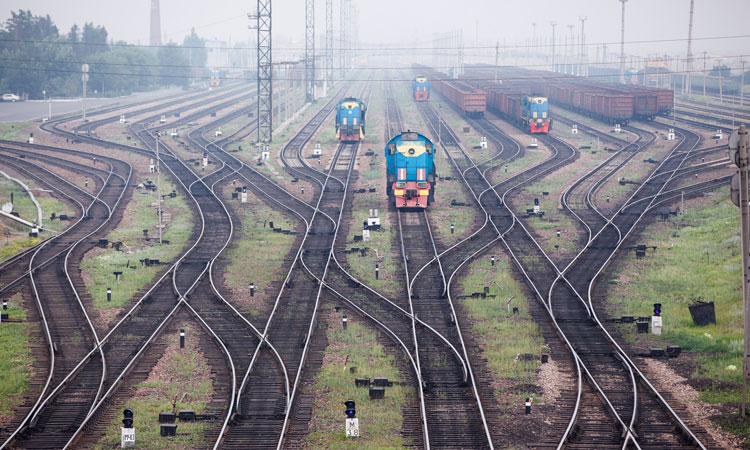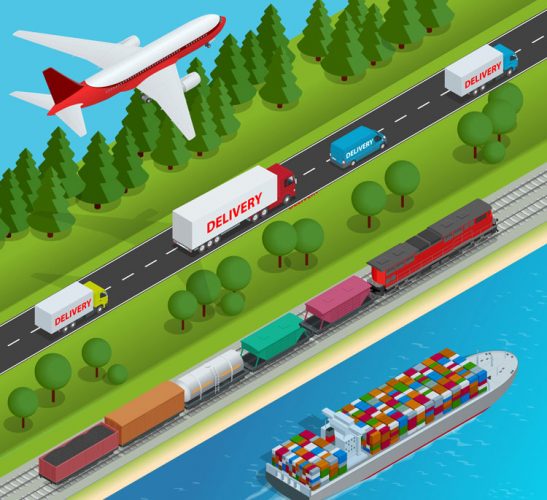How Indian Railways can use COVID-19 as an opportunity to develop
Posted: 21 April 2020 | Shilpi Bishnoi | 13 comments
Shilpi Bishnoi, Director, Traffic Commercial (Rates) at India’s Ministry of Railways, believes Indian Railways should use the current crisis as an opportunity to create a new business model by overhauling its passenger and freight segments, and that there are three areas the railway company should focus on now in order to safeguard its future.


Indian Railways plays a vital role in the economy and the lives of people in India. While the overall intermodal share of rail in freight traffic is around 35 per cent, it continues to account for a major share in transportation of bulk commodities – such as coal, iron ore, cement and food grains – which are drivers of the economy.
The year 2020-2021 will see the national and international economy bear the impact of the COVID-19 pandemic, which will also reflect on the transportation sector, including Indian Railways (IR). Rail freight had already begun to show signs of marginal decline in the third quarter of 2019-2020 due to the deceleration of growth in core sectors of economy. The economic impact of this pandemic shall linger much longer than the pandemic itself.
However, as it is said, it often takes a crisis to seize opportunities. IR has the choice to consider the current crisis as an opportunity and completely overhaul its passenger and freight transportation segments. This is the right time to look beyond the current year and chart a growth map for the next five to 10 years.
This is the right time to look beyond the current year and chart a growth map for the next five to 10 years.
Railways, besides possessing remarkable resource mobilisation capabilities and disciplined manpower, have demonstrated agility and ingenuity to cater to completely new requirements that arose in India’s fight against COVID-19. It has played a crucial part in maintaining the supply of essential items and helping livelihoods by stepping up the transportation of goods – such as foodgrains, milk and dairy products, farm produce, medicines etc. – by: Changing the traditional traffic routes, wherever required; aggregating small parcels and operating parcel cargo trains; and transporting critical medical equipment and Personal Protection Equipment (PPE).
Indian Railways has leveraged its resources and demonstrated the capability to manufacture PPE, ventilators, hospital beds and COVID-19 isolation coaches. It has also used its outreach to distribute food and rations in far flung regions. The ingenuity came alive in operating ‘Anaconda’ trains, which are thrice the standard length, and the launch of ‘SETU’ – a one stop helpline for parcel traffic to bridge the gaps in the supply chain. It has helped that IR has always been ahead of others on the IT curve, with almost all of its freight and passenger operations, as well as customer service, being completely online.


Rail freight has played a crucial part in maintaining the supply of essential items across India by stepping up the transportation of goods.
The focus during this year should be on acting as a catalyst to restart the economy, which can be done by offering the right freight rates and by assisting the customers in reaching out to the railway, i.e. to enhance the ease of doing business.
There are three focus areas that can enable the railway to turn-around and create a new business model:
1. Reorganise the passenger segment
Indian Railways has, for a long time, recognised the need to reduce cross-subsidy from freight to the passenger segment. Since most of the passenger services are priced much below cost and continue to incur heavy losses, it is necessary to first reorganise the passenger segment. At this point in time, passenger services are completely suspended, so now is the time to assess the entire passenger segment from the point of view of necessity and viability.
This is the time to conduct a zero-base analysis, based on which passenger services should be retained and which others should be discouraged.
These two criteria can be ascertained through factors like availability of alternative modes of transportation, the affordability of rail compared to other modes, distance and time leads, etc. There are segments which have well-developed road or mass rapid transport systems, like Metro railways. This is where the railway can work towards a reduced presence. Similarly, the road and air sectors have emerged as the preferred modes of travel for short and very long distances respectively. The railway must decide on a sector-by-sector strategy of pruning down less preferred services, keeping in view the specific local requirements.
As all passenger services remain suspended, and the booking for later periods like June to July is also significantly lower, it provides a blank slate for IR to overhaul the passenger segment from scratch. It is reasonable to expect that only essential travel will be undertaken for quite some time, even after the pandemic situation starts clearing up, and the rest of the journeys will be either canceled or postponed. Therefore, this is the time to conduct a zero-base analysis, based on which passenger services should be retained and which others should be discouraged.
2. Re-model the freight business
The cost of logistics in India is far higher than in developed economies. The social obligations of the passenger segment have been a defining factor in the pricing of freight traffic. Once the passenger segment has been reorganised, it would allow IR to focus more of its resources on freight traffic, including network capacity, rolling stock and manpower. This is also expected to result in more efficient transportation and, thus, a significant increase in the volume of freight traffic. This is when it will be possible to rate the freight services more on actual economics and less on other considerations. Better efficiency and higher volumes will enable IR to bring down the freight rates, while increasing freight earnings.
Once the passenger segment has been reorganised, it would allow IR to focus more of its resources on freight traffic, including network capacity, rolling stock and manpower.
A more competitive pricing of freight will also be necessitated by a fierce pricing competition from road transportation as soon as normalcy starts to return, as trucks (and drivers) would have been idling for long. This may potentially be a time when the railway will be at risk of losing its customers to road, but will also have the opportunity to gain traffic.
This competition can be turned into collaboration and, in fact, it would be an opportune time for uniting forces with road to form rail-road-rail or road-rail-road bridges and offer complete logistics solutions to customers. It is extremely important to bridge this gap in door-to-door logistics.
This will not only help IR financially, but will also have a cascading positive impact on the economy. The lower cost of transportation will expedite the economic recovery of most sectors.
3. Diversification of freight traffic
This is another area where IR has been making attempts to improve and has only had moderate success so far, with various alternatives like container services, parcels, cargo express trains, RO-RO, road-railer etc. Industries in India have been undergoing a transformation in the way their transportation supply chains mesh with their manufacturing processes for a long time now. One of the major aspects of these changes has been a consistent cutting down of the transit time of inventory. Longer transit time, as well as any uncertainty in transit times, is not favoured.
Two major limiting factors drive IR’s inability to provide either scheduled or assured transit times and comparative higher revenue from these models vis-à-vis the bulk goods carried at both higher volume and higher rates. This vicious cycle seems to have been broken as an unintended fallout of COVID-19, as passenger services and traditional goods traffic have shrunk. The current crisis has given IR the opportunity to start with a much-needed trial of scheduled parcel trains and container cargo trains. In this period, the railway has successfully aggregated and transported parcels over long distances through scheduled parcel trains. These gains need to be consolidated and multiplied by chartering a medium- and long-term strategy for similarly scheduled parcel trains.
Summary
It is reasonably expected that efficiency in freight operations and the reorganisation of passenger services will give IR the ability to achieve punctuality in freight operations, and thus attract time-sensitive cargo to rail – for example, fast-moving consumer goods, pharmaceutical, fruit and vegetables, machine parts etc. Indian Railways can form a powerful supply chain by joining hands with e-commerce giants and road logistics providers.
As American politician Rahm Emanuel once said: “You never let a serious crisis go to waste…it’s an opportunity to do things you think you could not do before.” This is the time for IR to do zero-base assessments of services; to make rail freight more competitive and a preferred option for larger sectors of the Indian economy; and use this opportunity to emerge as a more agile force in the Indian transportation sector.


Related topics
Cargo, Freight & Heavy-Haul, Coronavirus/COVID-19, Operational Performance, Passenger Experience/Satisfaction








What is the state of Railway Security in India ? Take the case of KRC Margao
It is better to use sniffer dogs,than the RPF or CCTV cameras.
The Disasters of Train Derailment in Goa Fenee land
• Vasco Train Derailment
o http://indianexpress.com/article/india/vasco-da-gama-patna-express-train-accident-live-updates-derailment-uttar-pradesh-banda-injured-death-toll-4951979/
• KRC train derailment
o http://indianexpress.com/photos/picture-gallery-others/passenger-train-derails-on-konkan-route-10-feared-dead/
Then there is the Bomb Threat at KRC Margao
o https://www.business-standard.com/article/news-ians/bomb-threat-at-goa-s-margao-railway-station-114120301011_1.html
Then there is the pandoos of RPF collecting haftas from pimps,hookers,thieves and smugglers,who spend their time in the station and platform
RPF pandoos are busy checking for hooch and fenee in the station ! Not Bombs ! This was stated by the AG !
http://www.navhindtimes.in/lax-security-measures-at-margao-railway-station-facilitate-easy-escapes/
How will pandoos check for IEDs and RDX.There is no X-Ray machine
They have a baggage room on the KRC platform at exit,where anyone can plant a bomb in his bags,and disappear,and it will explode after a few days or a few minutes !
And there are no baggage records ! After the blast – no one will know which bag blew up (forensically) !
One of the greatest achievement of the pandoo police of Goa is a crooked pandoo Duttagaru Sawant who caught 488 smuggled HELMETS,worth Rs 1.9 lacs !
https://www.heraldgoa.in/Goa/The-Sunday-Roundtable/two-held-with-488-nonisi-helmets/69110
He then demanded 3 free helmets – which were refused and then he arrested the 2 smugglers !
https://www.heraldgoa.in/Goa/SPCA-directs-exparte-proceedings-against-Sawant/93845
HELMETS !
Railways role of rescue, relief, rehabilitation and now return of migrants is vital.
Late realisation at the fagend of the lockdown period, that too by a railway babu in the ministry and not in the field. However, it is good if taken up by all other babus bit seriously.
A common user will think:
1.IR must cut their costs to offer competitive services.This aspect hardly ever comes up-why will users pay more without knowing what costs have been reduced?2.Passenger traffic is a social responsibility & can’t be wished away;there is no merit in focus on freight only at the cost of pax.
The result is a dissatisfied public.
3.IR holds huge lands at prime locations & has social infra like hospitals that should be monetized. Is a holistic approach missing in IR plans?
4.The image of IR as a govt dept with bloated bureaucracy & inefficient service must go.
Construct solar panels above and all railway track and side lands. This will help in reducing power chargers on railways. Air conditioning charges will also be reduced.
Mam
At this juncture everyone is thinking in their sphere of fields but putting the thoughts in words is great thing. So congratulation on summarizing the thoughts. At present a lots of people are stranded in the country away from their homes. Such people can be made to reach their destination by using corona isolation trains with due charging.
Mam, Reorganising Passenger segment will not be easy once things are back to near normal. There will be a clamour for restarting all services, perhaps demanding more. Economics, as usual will take a back seat when political & regional compulsions are to be met.
Possibly what we could try is to extend the present ban on concessions or atleast prune them down drastically. Flexible fare policy may be extended to all kinds of trains. And a lot more can be done to improve earnings.
Regarding freight service, yes the commodity mix must be broad based and the recent thrust on transporting small volumes must be continued. Hopefully DFC will be functional soon, atleast in stretches.
Thank you for the timely article.
Only time bound delivery of parcel goods and commodities will boost the earnings of Railways.
Door to door cargo based logistics services by railways is also another option.
Indian railways need to clean the passenger trains, they are the dirtiest trains i have ever seen, there are rats,cockroaches and ants in most of the trains, the toilets are always filthy and most of the time no water.
It is right time to think which region is not getting money from the passenger segment must be improved or some cut measures should be taken to control via removing some services and at the same time to increase in regions where money is coming
Madam, do you think long distance Express/Mail trains should be stopped, expect the likes of premium trains such as Rajdhani/Duronto/Hamsafar etc? Also, what is your view regarding passenger trains? They’re not necessarily a profit generating operation.
Ma’am,
It gives a very crisp insider view of the Indian Railway for all. In forces we have Standard Operating Procedure (SOP) for all types of situations so as to maintain similarity in action by all employees and for the optimum results. It is time for the Indian Railway to re-draft a similar SOP in coordination with other sectors, and providing aid to the economy.
excellent idea..IR-Trucks RoRo must have properly designed terminals unlike present day dirty shabby modules with full of dust.make system to invite people and make them turnaway..present systems of IR are not at all business men friendly.IR still carries old specialist burden where govt is supreme and customer.are just unwanted guys like good old PSBs..make a change in mental concept of IR staff inlyding super white collar babu engineers!! They are the bane for any radical modern chance over to international standards with infighting and bickering resulting in total sabotage of great ideas..create IR management cadre who will plan,execute modern concepts rather than divisional managers,who are old war horses thinking of power pelf and self importance.